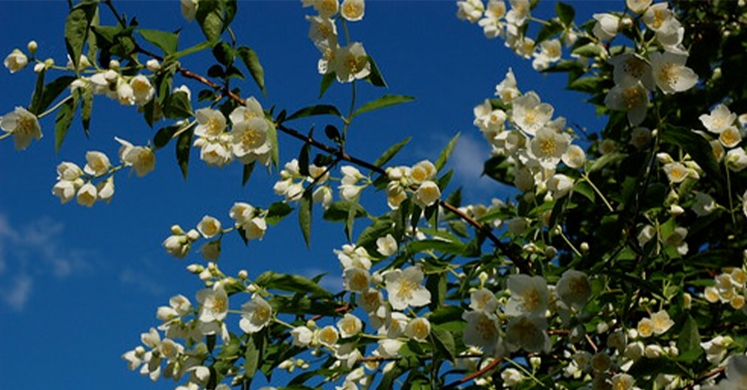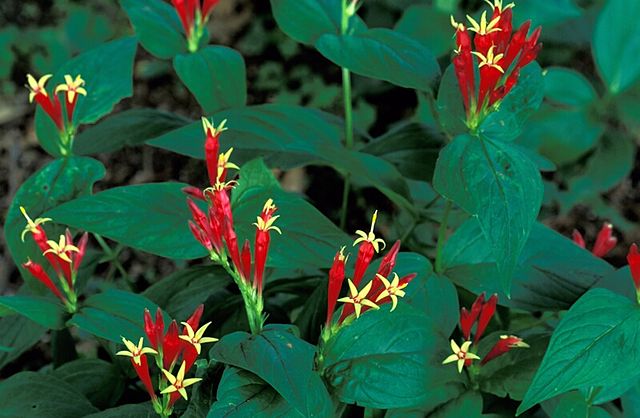Blog

Top 10 Sustainable Plants of 2020
Smart plant selection is the single most effective way to create a low-maintenance, high-enjoyment garden. Phipps offers an annual list of Top 10 Sustainable Plants, selected for their non-invasive habits, as well as for their resistance to disease and insects. Once established, these plants require minimal watering and fertilization. Many of these plants are on display in the Outdoor Garden at Phipps Conservatory and Botanical Gardens.
The Top 10 Sustainable Plants of 2020 are listed below, and we've also created a new Top 10 Sustainable Plants database of all our selections to date, allowing you to filter by height, width, ecological function, landscape function and more! Click here to view our complete listing of plants.
Trees
Common Persimmon
(Diospyros virginiana)
_Flikr.jpg)
This North American native produces a delicious fruit which is reminiscent of more tropical tastes. A good shade tree, it grows up to 60 feet tall. Its small insignificant blooms give way to delicious fruit in the fall. However, it can take up to 10 years to for the tree to mature enough to ripen that lovely treat. It is habituated to rocky limestone soils and can tolerate part shade until it reaches canopy height. Plant it somewhere sheltered where it is not exposed to too much wind.
Photo © Carole Grogloth
Northern Catalpa
(Catalpa speciosa)
_Flikr.jpg)
The northern catalpa is an easy large shade tree to grow in this area. While its native range comprises a narrow strip in the Midwestern US, it is naturalized throughout the eastern US. This fast growing tree attains heights over 50 feet with a canopy that can potentially get equally wide. Accustomed to a wide array of soil moisture, it can tolerate flooding, making this a great option for those locations where other trees would get too wet. These trees produce gorgeous creamy white blooms in early summer and a show of bright yellow leaves in the fall.
Photo © Plant Image Library
Tulip Poplar
(Liriodendron tulipifera)
_Flikr.jpg)
The largest of this crop of trees in the Top Ten, this North American native reaches up to 90 feet tall. It’s known for its large tulip-like blooms that emerge in early summer. In the fall it gives another show with its bright yellow leaves. Plant it in a rich soil where it will have plenty of room to grow and spread out its 50 foot canopy. Fun fact – these large trees were used for dugout canoes by Native Americans!
Photo © Alex Lomas
Shurbs
Mock Orange
(Philadelphus x virginalis)
_Flikr.jpg)
You may spot relatives of this white blooming shrub in the parks around Pittsburgh. Not only do their bright white flowers catch your eye, but also their delicious citrusy smell catches your nose! This hybrid grows to approximately 8 feet with a spread just short of that and produces double blooms, giving an even more impressive show during mid to late summer. It has a wide tolerance for environmental conditions, able to grow even in heavy clay and nutrient poor soils as well as in part shade or sun.
Photo © Justin Miller
Shrubby St. John's Wort
(Hypericum prolificum)
_Flikr.jpg)
This shrubby perennial will be a beautiful addition to any garden. Tolerant of a wide range of soil conditions, from humus to dry and rocky, you can place it in full sun or in a partly shaded environment. It produces gorgeous yellow blooms on new growth throughout the summer that are absolute bee magnets. Prune this North American native shrub in early spring to guarantee nice thick green growth for the season while preventing it from spreading beyond your preferred space.
Photo © Cranbrook Science Center
Perennials
American Spikenard
(Aralia racemosa)
_Flikr.jpg)
This native ginseng relative spreads through aromatic rhizomes in dappled light or full sun. They can reach over 4 feet tall with dark colored stems that complement large dark green compound leaves. They produce lovely white flowers in mid-summer that yield bright purple berry cluster which extend interest into the fall. They tolerate a wide range of soils from a rich environment to rocky and even clay dominated.
Photo © Peganum
Indian Pink
(Spigelia marilandica)

A native of the eastern United States, this beautiful easy to grow flowering perennial is underutilized in landscapes. Growing only to about 1 foot, its June emerging red flowers with bright yellow centers attract hummingbirds. In addition to this it is quite versatile, growing in those difficult shady spots of your yard in moist but well-draining soils. While preferring average moisture, it tolerates drought. It is clump forming and so won’t laterally spread in your garden.
Photo © Public Domain
Little Bluestem
(Schizachyrium scoparium)
_Flikr.jpg)
This beautiful light blueish grass grows to a height between 2 and 4 feet, depending on the conditions it is placed in. It can grow in a wide variety of soils, from rocky and extremely dry, to a rich soil with moderate moisture. It can tolerate high heat and exposure and is deer resistant. This native tough guy is a great addition to almost any landscape as long as it is in full sun.
Photo © Joshua Mayer
Spotted Beebalm
(Monarda punctata)
_Flikr.jpg)
This spreading beebalm is a gorgeous addition to your butterfly garden. Habituated to a large variety of soil conditions, you do not need to worry about this plant during extended droughts! This native plant has pretty light pink bracts which will give you long lasting color on their flower spikes throughout the summer. It is also a close relative to culinary mint so the leaves smell wonderful.
Photo © Johnx12
Wild Strawberry
(Fragaria virginiana)
_Flikr.jpg)
This stoloniferous groundcover can be found in the North American wild near ponds, in meadows, and at forest edges. In your landscape you can put this delicious little plant in any crack or crevice to let it spread for a carpet of green leaves and white blooms in the spring giving way to bright red edible berries in the early summer. It tolerates full exposure to sun, part shade, moist rich soils, as well as rocky or sandy ground.
*NOTE: Wild Strawberry also falls under our Ground Cover category
Photo © Joshua Mayer
